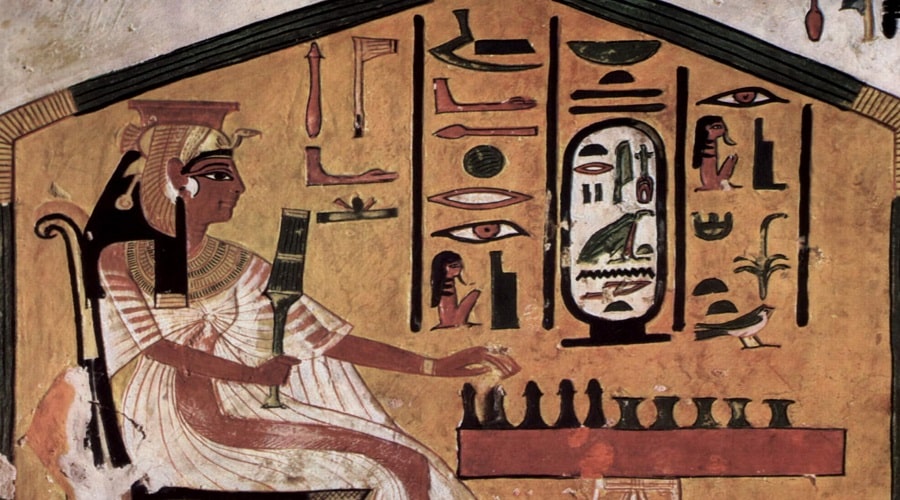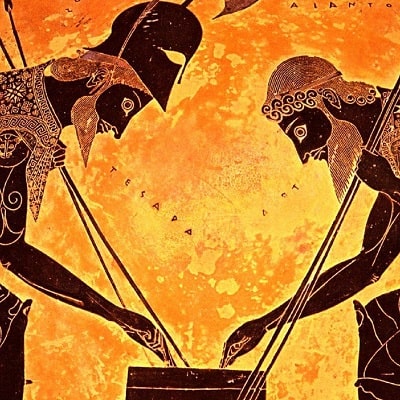Gambling has a very vague and unclear history. Scientists believe that gambling was present in people’s lives more than a thousand years ago. Putting together the puzzle of gambling’s evolution is not easy. Researchers, scientists and archaeologists have been working meticulously on this complex task. Preserved and excavated artefacts from the archeological excavations show that gambling has been around for around 4,000 years. This is the age of the oldest dice found during archaeological digs. Dice, according to many scientists, was the first game to appear on our planet. The word gambling, which sounds like Azzahr in Arabic, means dice. Ancient rock paintings or drawings on pottery often show Gods or common people throwing sheep or dog joints or a ram dice (such a gambling accessory was called “babka” – from Latin astragalus), as well as using special counting boards for scoring. Archaeologists have found large quantities of dice (doughnuts) during the exploration of prehistoric human camps. It is likely that humans were using dice for recreational pastime as early as 40,000 years ago. However, researchers are at a loss to find out the exact order in which these games were played. It is interesting that in ancient times, dice were used not only for entertainment, but also as a tool for casting lots. In the 2nd millennium BC, the real connoisseurs of gambling were the Aryans who conquered India. Almost all castes were fond of dice, the main gambling tool being vibhidaka nuts. The only exception was the deeply religious people.
Today’s world of gambling is so diverse and multifaceted that it is often difficult to trace its history. One of the most popular forms of entertainment has always been card games, whose origins date back to ancient India. The earliest cards were round, had eight suits, and a complete deck contained 96 pieces. These early games were based on logic and strategy, resembling chess in their mechanics. Over time, the concept of card playing spread to other regions through trade and cultural exchange, gradually reaching Europe. Italy holds a special place in this story, as it was there, in the second half of the 14th century, that cards were first mentioned in written documents. Italian players quickly became fascinated by this new form of entertainment, and historians believe it was in Italy that the oldest European card game, known as tarok, was invented. This game later influenced the development of many card traditions that continue to evolve even in the modern era, as regional variants—French, Spanish, and German—codified suits and court figures, while printing workshops helped standardise decks and accelerate their spread across major cities.

There are often many references to gambling in the folklore of various cultures around the world. For example, the ancient Romans and Greeks mention the God of Fortune (the God of Gambling) in their mythology. The Scots and the Irish in their tales speak of unclaimed winning bets. However, Asian folklore, which includes Japan, India and the Philippines, has a lot of dramatic stories about gambling. Asian folklore, for example, includes references to men who used to put human resources (their sisters, wives or daughters) at stake. Sometimes the body or a torso element of the player himself was taken as a bet. Some Asian legends of antiquity tell about gambling with the Gods.
There are many folk tales of gambling hobbies in North America as well. If you look at the statistics compiled by researchers, you can see one interesting detail. The North American Indians make up a good half of the peoples who were addicted to gambling and are studied by scientists.
The people of ancient Rome also gravitated towards gambling. The famous Roman emperors Claudius and Augustus often threw dice. Ordinary Romans could try their luck at dice only during certain seasons of the year.
During the Middle Ages priests repeatedly tried to eradicate gambling from people’s lives. But their efforts were unsuccessful, proving that ordinary people’s passion for games of chance is strong.
The first roulette was born in France. The gambling device appeared there in 1765, and opinions differ about the author of this invention. One version says roulette appeared as result of an unsuccessful experiment by French mathematician Pascal, who wanted to design another device – perpetual motion. Another version claims that it was police officer Gabriel de Sartinet who first invented it. The idea of the policeman was to develop a unique gambling game, where a player could not cheat and cheat.
The first casino opened in 1863 on the initiative of Prince Charles Grimaldi of Monaco. The word “casino” is of Italian origin and means “country house”.
In 1895, Charles Faye, a mechanic, invented the ‘one-armed bandit’ slot machine. Nowadays, these devices operate in almost every casino. The whole set of modern casino games, including cards and roulette, was invented by the beginning of the XX century, and after that the question of legalisation of gambling business was raised. To date, only the Americans have successfully solved it. The first and only legalized casino operates today in Las Vegas, Nevada. In other American states the gambling business exists only underground. But even in an illegal environment, gambling houses make huge profits for their owners.

